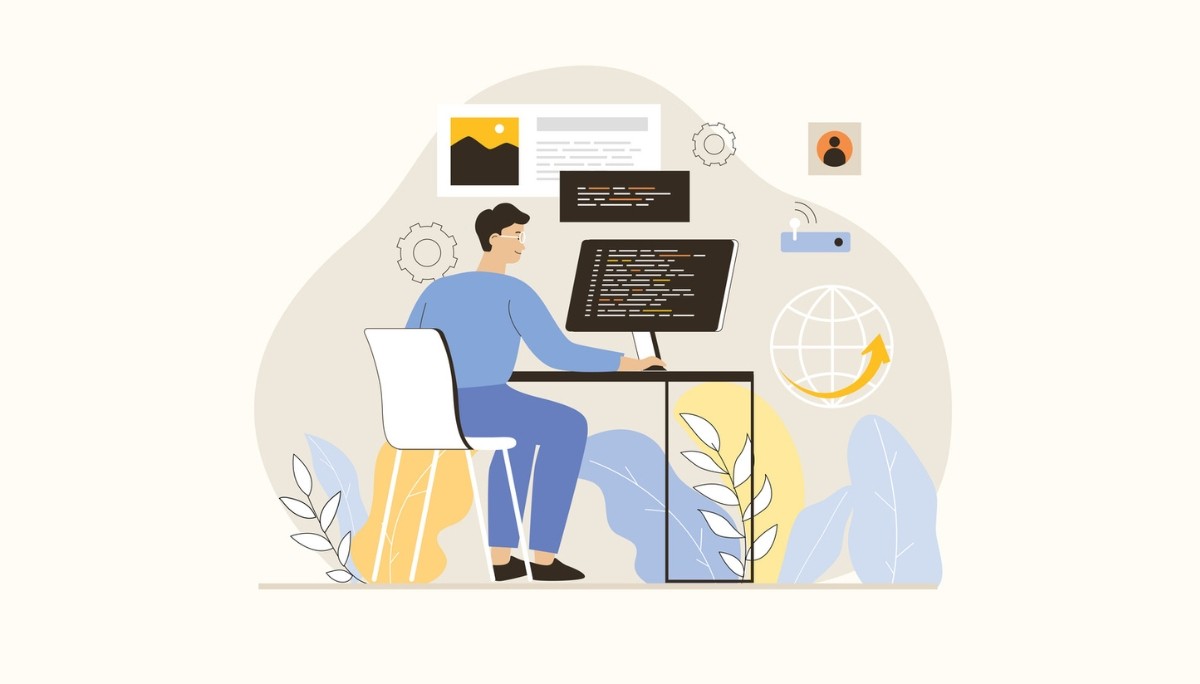Computer Vision Engineer Guide: Careers, Skills & AI Applications
By
Liz Fujiwara
•
Jul 31, 2025
A computer vision engineer plays a critical role at the intersection of artificial intelligence and real-world applications. These professionals design and optimize systems that enable computers to analyze, interpret, and act on visual information with remarkable accuracy. Leveraging advanced algorithms, machine learning models, and neural networks, they empower machines to perform complex tasks such as object detection, image classification, and real-time video analysis. From improving diagnostic imaging in healthcare to powering autonomous vehicles in the automotive industry and enhancing customer experiences in retail, computer vision engineers drive innovation across sectors. As industries continue to adopt AI-driven solutions, the demand for skilled computer vision engineers is accelerating, making this a high-impact career with significant growth potential.
Key Takeaways
Computer vision engineers design algorithms and systems that enable machines to interpret and analyze visual data, driving innovation across industries such as healthcare and automotive.
Proficiency in programming languages like Python and C++, combined with expertise in machine learning and deep learning techniques, is essential for success in this role.
Career paths for computer vision engineers span from entry-level positions to senior and specialized roles, highlighting the importance of continuous learning and a strong portfolio to remain competitive in the field.
What is a Computer Vision Engineer?

Computer vision is a branch of artificial intelligence that enables machines to interpret and understand visual data. It allows systems to recognize objects, make predictions, and take actions based on visual information. The ultimate goal is to help machines perceive the world in a way similar to human vision. Imagine a computer system that can classify images, detect objects, and recognize patterns. These are common tasks in AI vision, often powered by advanced computer vision algorithms.
A computer vision engineer is a professional who develops algorithms and systems that allow computers to process and analyze visual inputs. These engineers play a crucial role in creating solutions that impact various industries, from automated surveillance to medical imaging. Their work is essential in applying computer vision technology to solve complex problems and enhance user experiences across diverse sectors.
Key Skills for Computer Vision Engineers

To excel as a computer vision engineer, mastering a range of technical skills is essential. Proficiency in programming languages such as Python and C++ is crucial for developing algorithms and applications. A strong understanding of machine learning techniques is also necessary, as these form the foundation for creating intelligent systems.
Deep learning models, particularly convolutional neural networks (CNNs), are critical for improving the accuracy and efficiency of computer vision tasks. These skills are explored in more detail below.
Programming Languages
Python is the primary programming language for computer vision because of its extensive libraries for machine learning. Libraries such as OpenCV and TensorFlow simplify complex tasks in computer vision, making Python a popular choice among engineers.
While Python is excellent for prototyping, C++ is essential for performance-intensive applications. C++ delivers the speed and efficiency required for real-time computer vision systems, making it indispensable in certain scenarios.
Machine Learning Techniques
Mastery of machine learning techniques is fundamental for computer vision engineers. Deep learning, a key subset of machine learning, is widely used in computer vision. Expertise in supervised learning is essential for training models to classify images accurately.
Unsupervised learning methods are equally important, as they help uncover patterns in unlabeled data within computer vision tasks. These techniques enable computers to recognize patterns and make decisions based on visual information.
Deep Learning Models
Convolutional neural networks (CNNs) form the backbone of most modern computer vision applications. These neural networks analyze digital images by processing RGB values, color distribution, shape, texture, and depth. Notable advancements, such as AlexNet, have significantly improved image classification accuracy. Early models like the Neocognitron laid the foundation for today’s advanced CNN architectures.
Familiarity with these deep learning algorithms is essential for any computer vision engineer.
Career Pathways for Computer Vision Engineers
The career pathways for computer vision engineers are diverse and dynamic. Many professionals begin in related fields such as software engineering or data science before moving into specialized roles in computer vision. As they gain experience, engineers can advance to mid-level positions such as a computer vision specialist or senior software engineer.
Advanced roles often include strategic positions like lead engineer or AI researcher, where the focus shifts to innovation, system design, and project leadership.
Entry-Level Positions
Typical entry-level positions for computer vision engineers include roles such as junior software developer and research assistant. These positions focus on building foundational skills in programming and machine learning, which are essential for success. They also require familiarity with image processing techniques.
Entry-level engineers often collaborate with data scientists and software developers to integrate visual models into applications.
Mid-Level Roles
Mid-level positions typically involve greater responsibilities, such as developing advanced algorithms or managing small teams. Roles like computer vision specialist require deeper expertise in designing and optimizing computer vision systems.
These positions are critical because they bridge the gap between entry-level roles and advanced career opportunities. At this stage, practical applications of computer vision technology become more prominent.
Advanced Careers
Advanced careers in computer vision often involve leadership roles, such as lead engineer or AI researcher. These positions focus on innovation and project management, requiring deep expertise in AI and computer vision.
Advanced roles may include leading teams on projects that involve collaboration across multiple disciplines. These strategic positions demand strong leadership skills alongside a comprehensive understanding of computer vision technology.
Applications of Computer Vision Technology

Computer vision technology has a profound impact across various industries. From healthcare to automotive and retail, its applications are diverse and transformative. Computer vision enhances operational efficiency and decision-making by enabling machines to analyze visual data and implement intelligent solutions.
Below are some of the most prominent real-world applications of computer vision technology.
Healthcare
Computer vision enhances medical imaging by improving the detection of conditions such as tuberculosis and respiratory infections. Deep neural networks are frequently used to detect brain tumors in MRI scans, demonstrating the effectiveness of computer vision in medical diagnostics.
This technology can identify subtle abnormalities in medical images that may be missed by the human eye. Machine learning techniques enable accurate diagnoses by distinguishing between cancerous and non-cancerous tissues in MRI scans. Continuous advancements in medical image analysis and image recognition further improve tumor detection accuracy.
For example, the COVID-Net model is specifically designed to diagnose COVID-19 through chest X-ray images using computer vision technology.
Automotive Industry
Self-driving cars rely on computer vision for several key functions:
Recognizing road signs and detecting pedestrians to enhance safety.
Identifying people, traffic signs, and vehicles to improve situational awareness and decision-making.
Quickly analyzing surroundings in traffic management to support real-time decisions, including object recognition and scene understanding.
Traffic management applications include:
Automated pavement distress detection and road condition monitoring.
Traffic sign detection using advanced object detection techniques like image segmentation and deep learning algorithms.
Collision avoidance systems enhanced by deep learning models to improve vehicle safety, including traffic monitoring systems.
Pedestrian detection technology has significantly advanced due to deep convolutional neural networks, making it crucial for self-driving cars. Deep learning approaches are also applied in vehicle classification to monitor safety and productivity, especially in construction zones.
Retail and E-commerce
Analyzing customer behavior is essential for retailers. It helps improve store layouts, increase customer satisfaction, and measure key performance metrics. Facial recognition technology can analyze customer behavior and improve the shopping experience by tracking movement patterns.
Deep learning algorithms can process video data streams in real time, enabling them to:
Track customer footfall effectively.
Detect and count people using computer vision algorithms trained on relevant data, which is essential for monitoring customer activity.
Aid in theft detection by identifying suspicious behaviors such as loitering, including object tracking.
Camera-based methods provide valuable insights into customer presence and behavior, helping market analysts improve store efficiency. Queue detection technology tracks and counts shoppers in line, supporting efficient store operations management. The integration of computer vision in retail provides a more immersive and satisfying shopping experience for customers.
Training and Deploying Computer Vision Models

Training and deploying computer vision models involves a systematic workflow, beginning with data collection and preprocessing and progressing through model evaluation and deployment. This process is essential for developing effective computer vision systems capable of tasks such as object detection, image classification, and object recognition.
The steps involved in training and deploying these models include the following.
Data Collection and Preprocessing
Model training requires substantial application-specific data to achieve effective learning outcomes. Thorough data cleaning involves:
Identifying and removing duplicates
Removing mislabeled images
Eliminating low-quality samples
Preprocessing, including feature extraction and quality control, addresses issues like noise and inconsistencies in the data, further improving results.
Resizing image data, normalizing pixel values, and dataset augmentation are vital techniques for preparing data for model training.
Model Training
Training a computer vision model requires large amounts of application-specific object data. Optimizing hyperparameters such as learning rate and batch size is critical for achieving the best performance during training.
High-performance GPUs significantly accelerate the training process for computer vision models. Data augmentation techniques like rotation, flipping, and brightness adjustments can greatly improve model generalization. These methods help ensure the model can effectively learn and adapt to a wide variety of visual inputs.
Model Deployment
Cloud servers, data centers, and edge devices are all suitable for deploying computer vision models. Each platform offers unique advantages depending on the specific use case. Deploying AI inferencing capabilities closer to the edge significantly enhances overall performance.
This flexibility ensures computer vision applications can be effectively integrated into a variety of computer systems, from centralized data centers to local edge devices.
The Impact of AI on Hiring Computer Vision Engineers

Artificial intelligence is revolutionizing the hiring process for computer vision engineers. Fonzi utilizes data-driven matching to connect qualified candidates with companies, enhancing hiring efficiency. This platform uses algorithms to analyze candidate profiles and company needs, increasing the probability of successful job placements.
Reducing bias in hiring is a core focus for Fonzi to ensure a fair and transparent process. The platform incorporates several measures to promote fairness and diversity:
Fairness metrics in its algorithms to minimize bias and promote diversity among candidates
Structured hiring practices to ensure an equitable evaluation process
Bias-audited and structured evaluations that provide transparency and fairness
This commitment to reducing bias helps create a more inclusive job market for computer vision engineers, benefiting both employers and job seekers by making the hiring process clearer and more efficient.
Fonzi’s Match Day
During Fonzi’s Match Day, companies make salary-backed offers to candidates within a 48-hour window, streamlining the hiring experience. This curated matching event efficiently connects top-tier companies with qualified candidates, significantly reducing time spent on applications.
Fonzi’s Match Day aims to protect the candidate experience and speed up the hiring timeline, making the process more transparent and beneficial for all parties involved.
Preparing for a Career in Computer Vision
Preparing for a career in computer vision involves building a strong portfolio, preparing for interviews, and engaging in continuous learning. Aspiring computer vision engineers should highlight their past projects and demonstrate theoretical knowledge during interviews.
Building a Strong Portfolio
Computer vision engineers must demonstrate a broad range of skills, including proficiency in machine learning, deep learning, and image processing. Essential programming languages for computer vision include Python, C++, and Java, all crucial for developing effective applications.
Key machine learning techniques such as supervised and unsupervised learning, reinforcement learning, and neural networks form the foundation of computer vision. Deep learning models, especially convolutional neural networks (CNNs), play a significant role in enhancing computer vision capabilities.
A strong portfolio showcasing a variety of projects is vital to demonstrate an engineer’s expertise and practical application of skills. Continuous learning is essential to keep computer vision engineers updated with the latest advancements in AI and computer vision technologies.
Interview Preparation
Preparing for technical interviews involves understanding common problem-solving questions and practicing coding challenges related to computer vision. Candidates should familiarize themselves with common problem-solving questions that test algorithmic thinking, data structures, and optimization techniques. These questions often involve challenges such as image processing algorithms, pattern recognition, and computational geometry relevant to computer vision tasks.
Continuous Learning
Computer vision engineers must stay updated on advancements in artificial intelligence and computer vision through ongoing research. Continuous learning is essential for adapting to the fast-paced evolution of technology. It helps engineers enhance their skills and remain competitive in the job market.
Summary
The journey to becoming a computer vision engineer is both challenging and rewarding. From mastering essential technical skills to understanding the diverse applications of computer vision technology, this guide provides a comprehensive overview of what it takes to succeed in the field. The role of AI in transforming the hiring process, especially through platforms like Fonzi, highlights the importance of reducing bias and promoting fairness. By building a strong portfolio, preparing effectively for interviews, and committing to continuous learning, aspiring computer vision engineers can confidently navigate the competitive AI job market. Let this guide inspire you to explore the exciting world of computer vision and pursue a fulfilling career in this transformative field.




